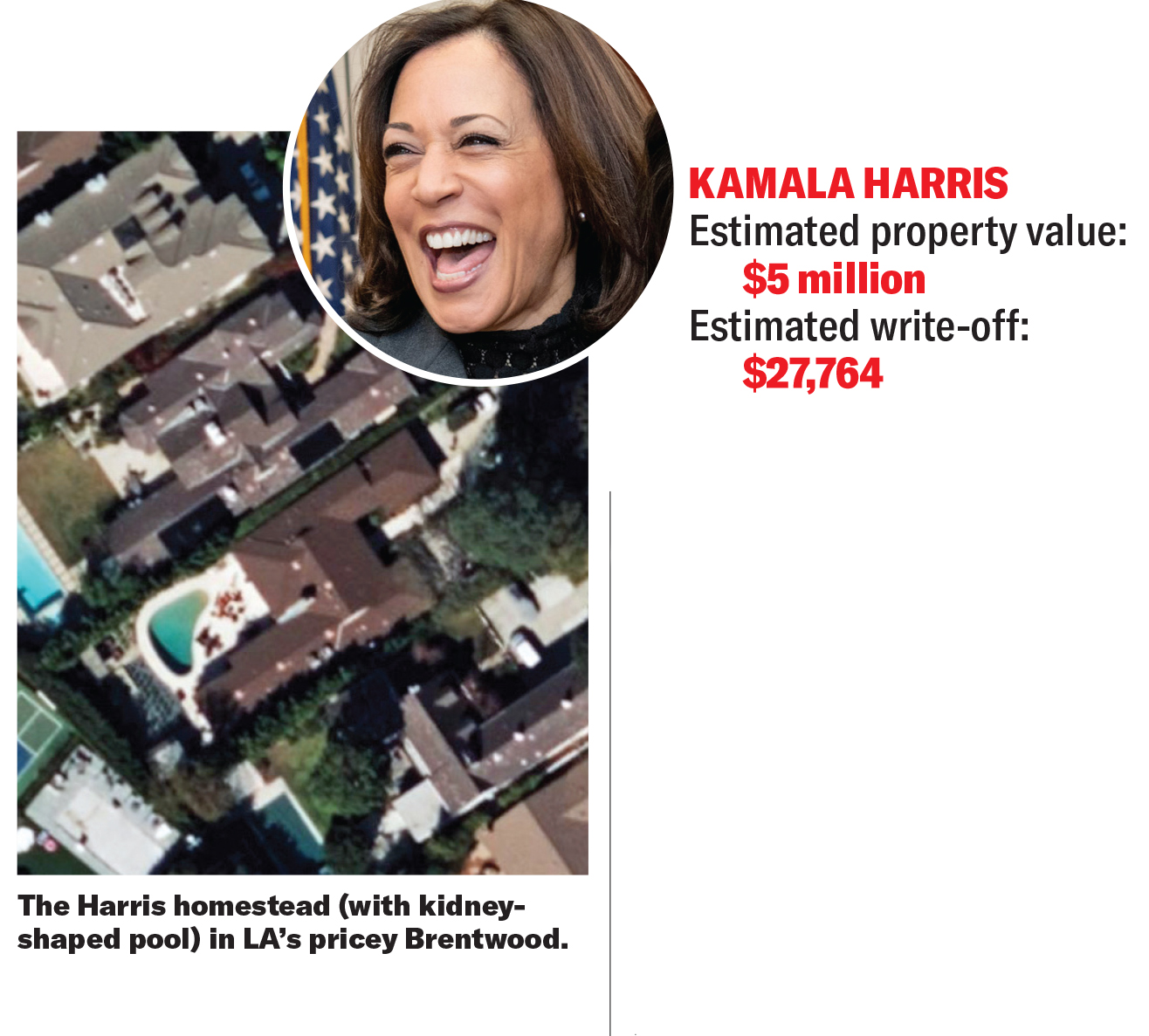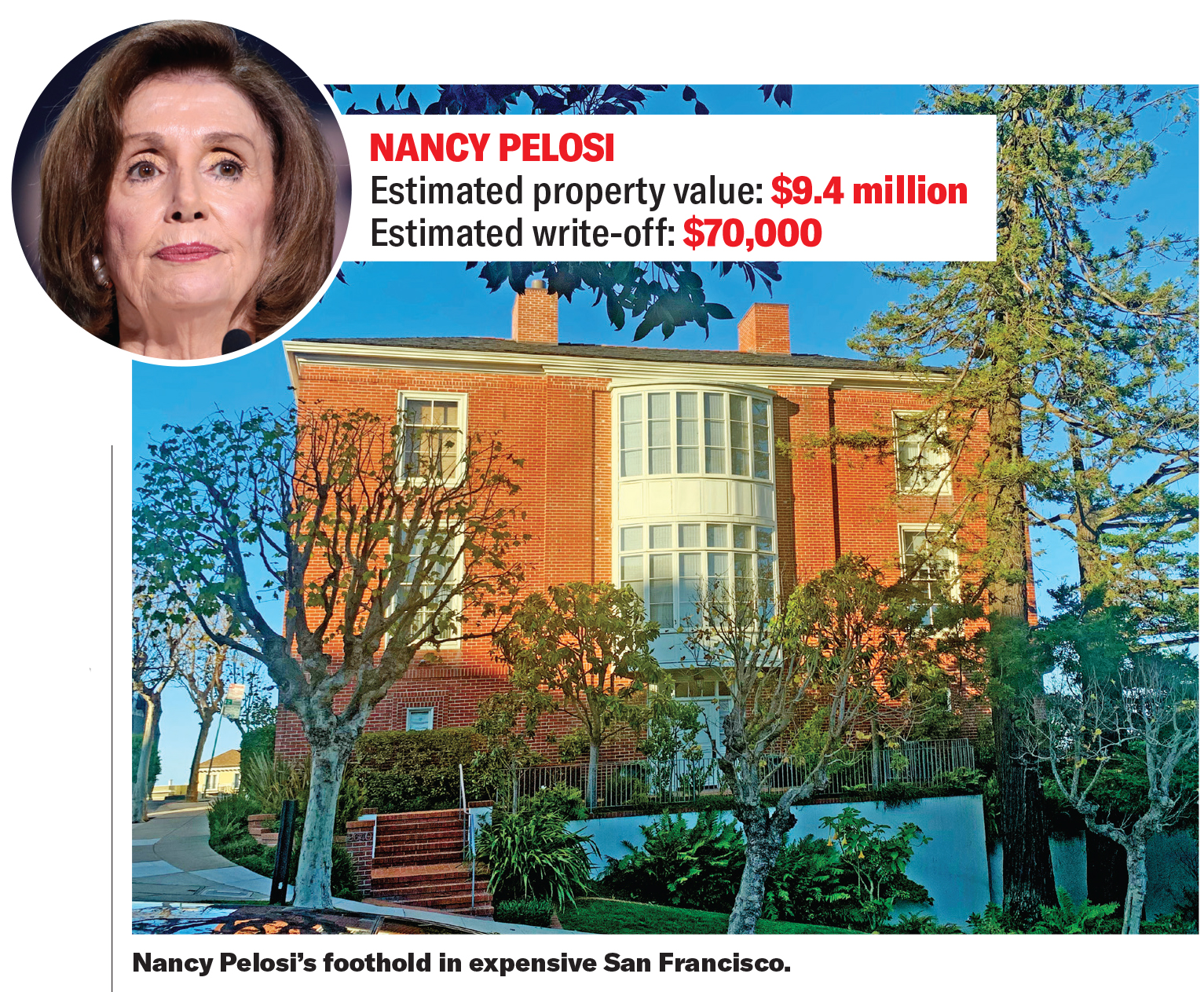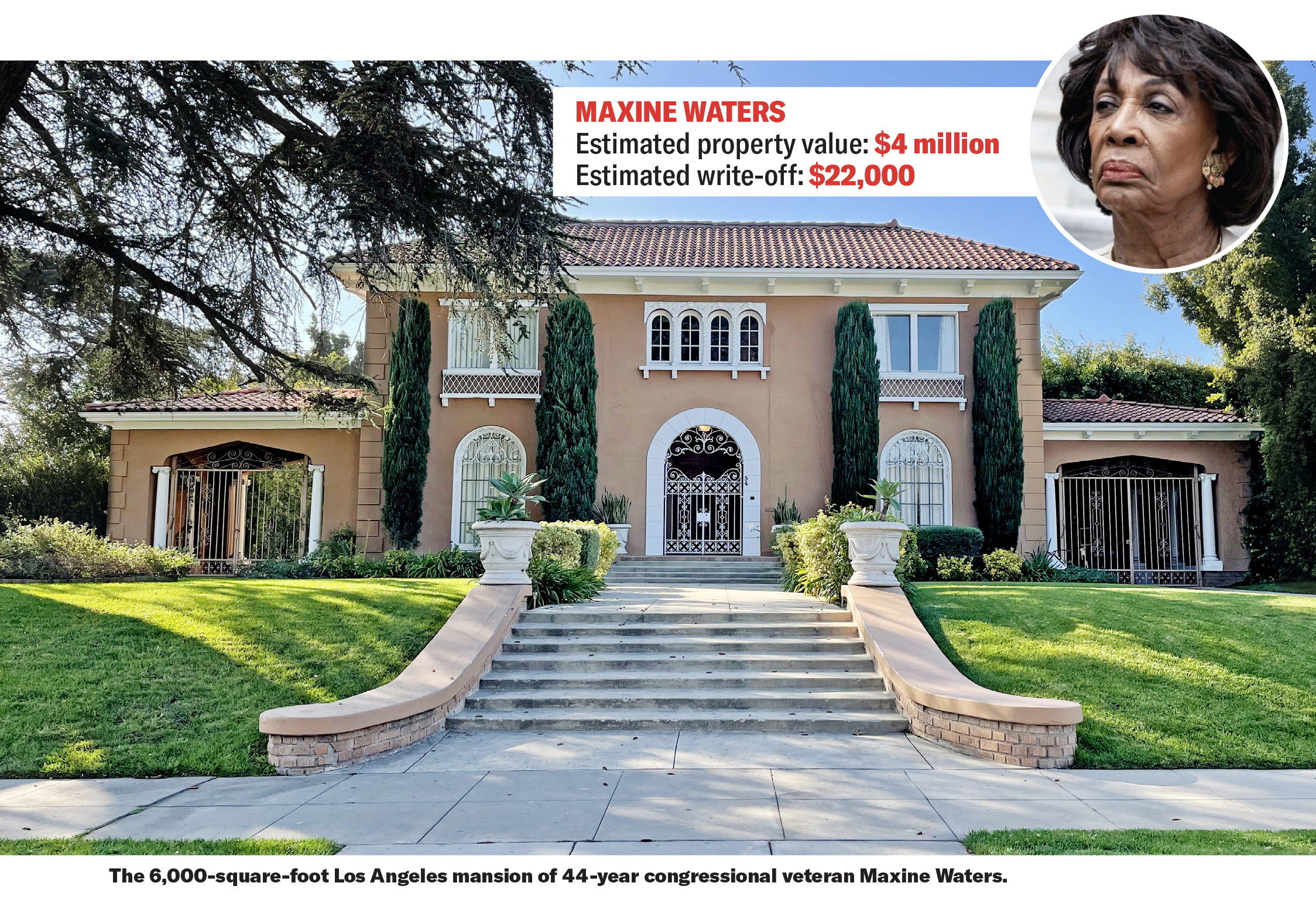While Democratic leaders work out how to pay for a $1.75 trillion reconciliation bill that could include enhanced child tax credits, universal preschool, and subsidized childcare, they’re also kicking around the idea of throwing in a major tax cut — one whose benefits would overwhelmingly accrue to the highest income earners.

In fact, some of the biggest beneficiaries could be the very politicians who are pushing to get it passed.
Included in the bill is a provision to raise the current $10,000 limit on state and local tax deductions, known as the SALT cap, to as high as $80,000. Established in the 2017 Tax Cuts and Jobs Act, the cap restricts how much high earners can write off on their federal tax returns. If it’s raised, the rare earners who pay property, state, and local income taxes in excess of $80,000 could write off an additional $70,000 on their federal returns.
At the top federal income tax rate of 37%, these filers would add nearly $26,000 to their net income every year. Those with middle incomes could get a tax cut, too — about $20 a year, on average.
“This is totally contrary to the theme of Build Back Better,” said Marc Goldwein, senior policy director for the Committee for a Responsible Federal Budget, a nonpartisan think tank. “BBB is supposed to be about strengthening the middle class, uplifting the working poor, helping parents and children, and investing in the future and climate change. This does none of these things.”
Goldwein’s analysis found that raising the SALT cap would cost roughly $300 billion through 2025, with $240 billion going to those making more than $200,000 a year. The cap is a prominent political issue in blue states with higher taxes, which explains why many Democrats want to see it lifted. Yet Goldwein found that the vast majority of tax filers, even in those areas, got an overall tax cut from the 2017 bill.
“This is frankly hypocritical,” Goldwein said. “Democrats spent the last four years rightly criticizing the Trump tax cuts for being a huge break for the rich. A larger share of this goes to the rich than the Trump tax credits did.”
To illustrate how it all works, the Washington Examiner analyzed a combination of property tax records and Zillow estimates to see how much more leading Democrats could write off just on their property taxes with an $80,000 SALT cap, not including any savings from state and local income tax deductions. While the complicated tax code always makes estimating tax rates tricky, the analysis provides a glimpse into what’s at stake for high earners and property owners.
Maxine Waters
Estimated property value: $4 million
Estimated property taxes: $32,000
Estimated write-off: $22,000
Waters, who chairs the U.S. House Financial Services Committee, lives in a 6,000-square-foot Los Angeles mansion that is
no longer located in her district
. With an $80,000 SALT cap, Waters could write off an additional $22,000 in property taxes.
Joe Biden
Estimated property value: $3.8 million
Estimated property taxes: $21,000
Estimated write-off: $11,000
The president owns two Delaware homes, one in Wilmington and one in Rehoboth Beach, with a combined value of just under $4 million. Thanks to the state’s low property taxes, it is estimated that he owed a relatively paltry $21,000 to the local authorities for them in 2021. Still, raising the SALT cap could grant Biden a cool $11,000 federal tax write-off from his two houses.
Nancy Pelosi

Estimated property value (main home only): $9.4 million
Estimated property taxes: $92,964
Estimated write-off: $70,000
One of the richest members of Congress, Pelosi reportedly owns nine properties worth more than $20 million in total. However, her main home in San Francisco’s tony Pacific Heights neighborhood is worth an estimated $9.4 million alone, and Zillow says she owed $92,964 in 2020 property taxes for just that one house. This alone would see Pelosi reach an $80,000 SALT cap, allowing an additional $70,000 federal tax write-off.
Bernie Sanders
Estimated property value: $1 million
Estimated property taxes: $21,557
Estimated write-off: $11,557
The Vermont socialist owns two houses in his home state, including one on the shores of Lake Champlain. He had owned a D.C. condo since 2007 before selling it off this year. Sanders,
who has argued against a full SALT cap repeal
, could write off an additional $11,557 in property taxes with a raised cap, on top of any deductions from state and local income taxes.
Kamala Harris
Estimated property value: $5 million
Estimated property taxes: $37,764
Estimated write-off: $27,764
Like Sanders, Vice President Harris has been selling property of late, unloading condominiums in Washington and San Francisco after moving in at Observatory Circle. But she still owns a home in Los Angeles. Her husband, Doug Emhoff, purchased the $5 million, 3,500-square-foot abode before the couple were married. It’s located in LA’s upper-crust Brentwood neighborhood, meaning the couple counts A-listers such as Reese Witherspoon and LeBron James as neighbors. Zillow put taxes on the house at $37,764 in 2020, so Harris could have a $27,764 tax write-off on the line in the SALT cap fight.
Middle-income earners could see a small break, too, if they decide it’s worth itemizing. CRFB’s analysis found that just 2.5% of the tax savings for a higher SALT cap would go to taxpayers making less than $100,000 a year.
“Even those making $200,000 a year wouldn’t get much of a benefit,” said Goldwein. “As your income goes up, the benefit goes up.”
The 2017 tax cuts established the SALT cap in part because they also rolled the alternative minimum tax threshold up to $1 million and pegged it to inflation. The cap was perceived as a shot at blue states from then-President Donald Trump, as it affected their residents most and shifted the federal tax burden away from less affluent states and toward high-tax places such as New York, New Jersey, and California.
“The loss of our SALT deductions was used to pay for Trump’s awful tax cut for the wealthy,” New Jersey Sen. Cory Booker tweeted in March. “It punished states that send more in taxes than they receive in investments in their state. Senator Menendez & I are committed to lifting this unfair cap on NJyans.”
But those same blue staters benefited from a reduced top tax rate and a cut in corporate taxes, and most got an overall tax cut, again calling into question the need to raise the SALT cap.
Democrats may have no choice if they intend to get their bill over the finish line in a closely divided Congress.
“They have no votes to spare,” Goldwein said. “And there are a few members from districts with very high incomes in high-tax states that have said things like, ‘No SALT, no dice.'”
While there are Republicans in the so-called ”
SALT Caucus
,” they may be unlikely to vote in favor of the reconciliation bill in any case.
On paper, the tax cut would be offset by allowing most everything else in the 2017 Tax Cuts and Jobs Act to expire in 2026. Politically, that is unlikely to happen.
Goldwein describes raising the cap as a “costly mistake.” How costly? At $300 billion, it would hit government coffers harder than the child tax credit, the earned income credit, and universal preschool
combined
. It would cost more than any single provision in the plan save for childcare subsidies. Raising the SALT cap could grant high earners an annual income boost of up to $26,000 — 10 times the $2,600 an average family of four would receive through child tax credits.
There’s an argument to be made that raising the SALT cap would help high-tax states at the local level, since they could raise taxes and effectively have some of that offset with lower federal taxes.
“It would be a subsidy or benefit for state and local governments,” said Eric Toder, co-director of the Washington-based Tax Policy Center. “But it’s a very targeted kind of benefit, and probably not the most efficient way to help those states out.”
The Tax Policy Center’s analysis found that among the top 1% of income earners, 88% would benefit from a higher SALT cap. Among the top 5% of income earners, 46% would benefit. But only 8% of all tax filers would save a single dollar. Anyone taking the standard deduction would see zero benefit.
The size of the reconciliation bill has been trending downward for months as programs get slashed, yet holding a spot is a provision that saves the wealthy billions of dollars tucked into a bill designed to help the lower and middle classes.
“Anything that costs money comes at the expense of somebody,” said Toder. “That’s one thing we don’t know. What spending program won’t be funded? Which other tax credit might not get funded? There are opportunity costs to everything. This provision has no direct losers, but indirectly, somebody is either paying more or getting less.”
Haisten Willis is a reporter for the Washington Examiner.







